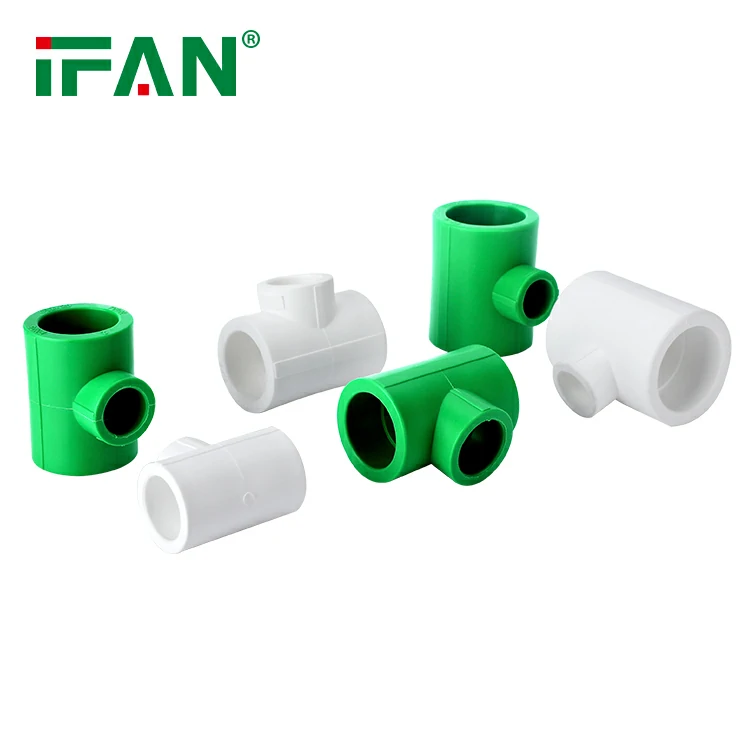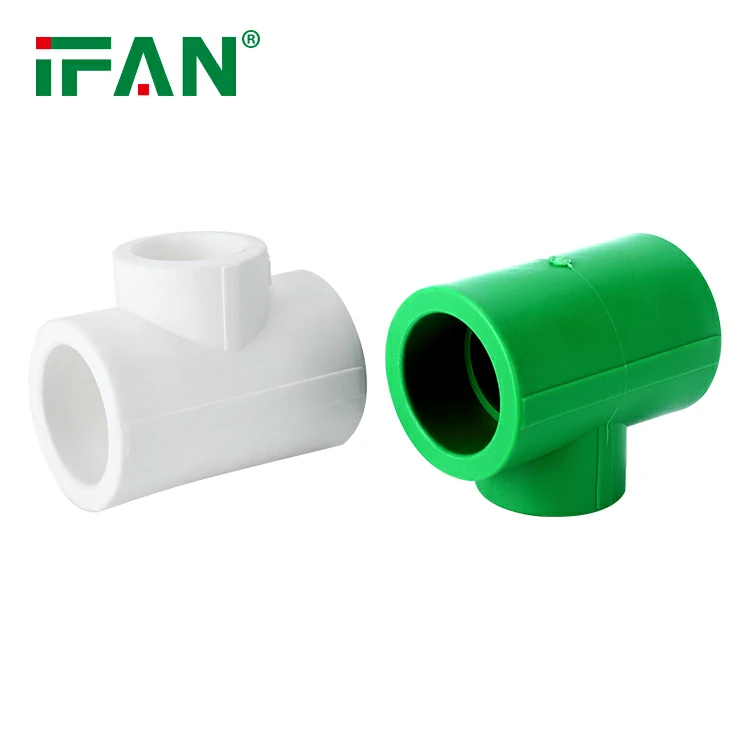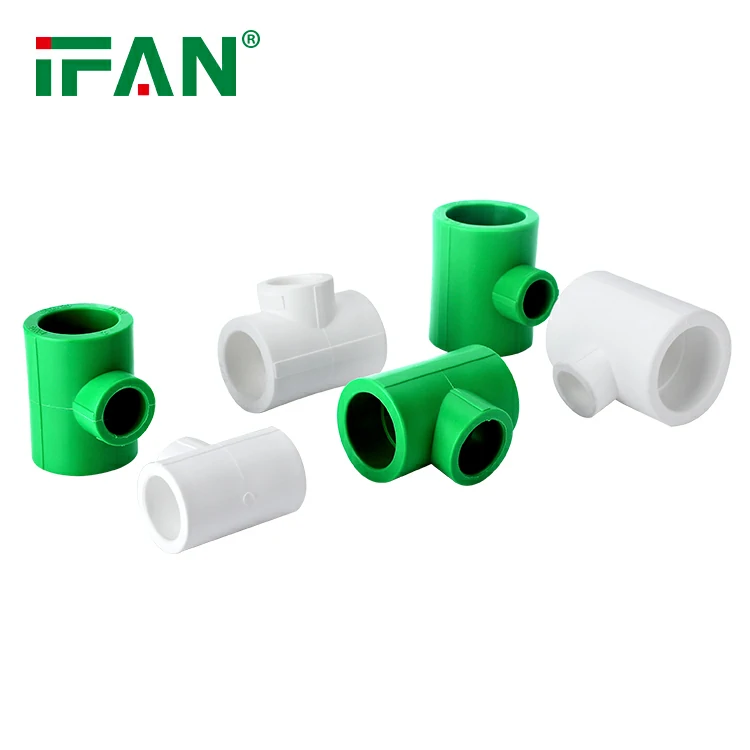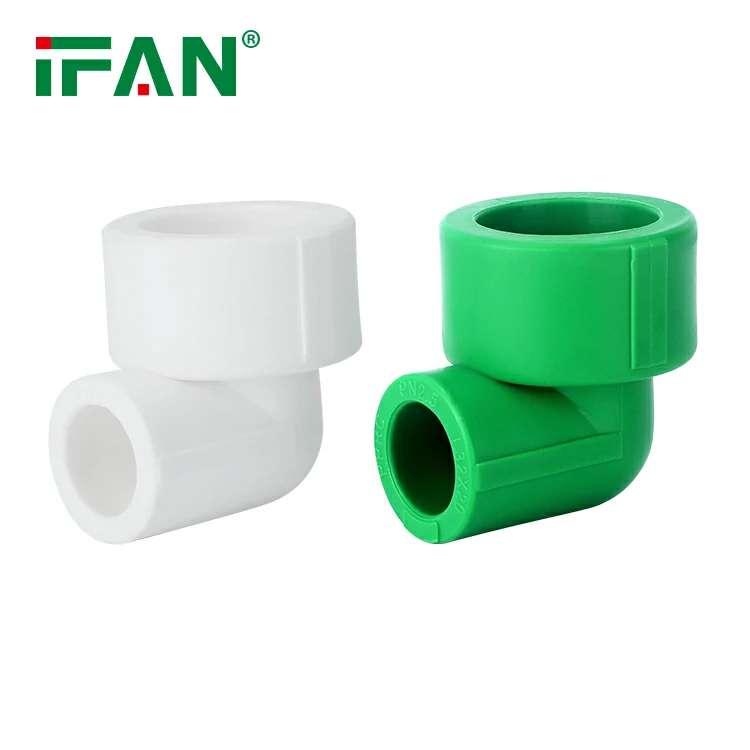IFAN factory 30+ years manufacture experience support color /size customization support free sample.Welcome to consult for catalog and free samples.This is our Facebook Website:www.facebook.com,Click to watch IFAN’s product video.Compared with Tomex products, our IFAN products from quality to price are your best choice, welcome to buy!
Polypropylene Random Copolymer (PPR) fittings have become a popular choice for plumbing systems due to their resistance to corrosion, ease of installation, and long lifespan. However, like any plumbing material, PPR fittings can encounter issues that affect their performance. In this guide, we will walk you through common problems with PPR fittings and offer troubleshooting tips to keep your plumbing system running smoothly.
1. Leaks Due to Incorrect Installation of PPR Fittings
Problem:
One of the most common issues with PPR fittings is leaks, typically caused by improper installation. If the pipes and fittings aren’t fused correctly, you may experience gaps or weak joints that result in water leakage.
Solution:
Proper installation is crucial for the longevity and performance of PPR fittings. Here’s how to prevent leaks during installation:
- Use a proper fusion tool: PPR fittings require a specific fusion process, which involves heating the pipe and fitting to the right temperature. Using a high-quality fusion tool is essential for creating a strong bond.
- Check the fusion temperature: For optimal results, the pipe and fitting should be heated to 260-280°C. Too low a temperature can lead to weak joints, while too high a temperature can cause damage.
- Ensure complete insertion: After heating, ensure the pipe is fully inserted into the fitting for a secure and leak-proof connection.
- Allow proper cooling time: After fusion, wait for the joint to cool before turning on the water supply. Prematurely pressurizing the system can cause failure.
By following these installation guidelines, you can avoid leaks and ensure a secure, long-lasting connection.
2. Issues with Expansion and Contraction of PPR Fittings
Problem:
PPR fittings are sensitive to temperature changes. Exposure to extreme temperature fluctuations can lead to the expansion or contraction of the pipes, which may cause joint failure or burst pipes under high pressure.
Solution:
To minimize the impact of temperature changes on your PPR plumbing system, consider the following strategies:
- Install expansion loops: Expansion loops are designed to absorb the pressure caused by thermal expansion. Including them in your plumbing layout can prevent stress on the fittings and pipes.
- Use pipe insulation: Insulating PPR pipes, especially in outdoor or unregulated temperature areas, can help minimize expansion and contraction.
- Avoid extreme temperatures: While PPR can withstand temperatures up to 95°C, regular exposure to very hot or very cold water can weaken the material. Keep the system within the recommended temperature range.
Proper management of thermal expansion and contraction can help prevent cracks, leaks, or other damage to your PPR fittings.
3. Contamination During the Fusion Process
Problem:
Contamination during the fusion process can weaken the bond between the pipe and fitting, leading to leaks or joint failure. Contaminants such as dirt, dust, moisture, and oils can interfere with the fusion process.
Solution:
Ensure a clean fusion process by following these steps:
- Clean the surfaces: Before fusion, thoroughly clean both the pipe and fitting surfaces using a lint-free cloth to remove any dirt, dust, or oils.
- Dry the pipe and fitting: Moisture can disrupt the fusion process. Make sure both the pipe and fitting are completely dry before heating.
- Avoid touching the fusion surfaces: After cleaning, avoid touching the mating surfaces of the pipe and fitting to prevent transferring oils or dirt from your hands.
By ensuring the surfaces are clean and dry, you can improve the fusion bond and reduce the likelihood of leaks.
4. Improper Pipe Cutting Leading to Leaks
Problem:
An improper cut on the pipe can result in an uneven surface, which can lead to a poor connection between the pipe and fitting. A rough or jagged edge can also stress the joint, leading to leaks over time.
Solution:
A clean, straight cut is essential for a good bond between the PPR pipe and fitting. Here’s how to achieve the best cut:
- Use a pipe cutter: A sharp, high-quality pipe cutter will ensure a clean, straight cut. Avoid using saws, as they can create jagged edges that may compromise the joint.
- Deburr the cut edges: After cutting, inspect the pipe for burrs or rough edges and remove them using a deburring tool. This will help achieve a smoother and more secure fusion.
- Measure carefully: Accurate measurements are important to ensure the pipe fits correctly into the fitting. Incorrect pipe length can lead to misalignments and leaks.
By cutting the pipe correctly, you’ll improve the quality of the fusion and reduce the chances of leaks.
5. Pressure-Related Issues with PPR Fittings
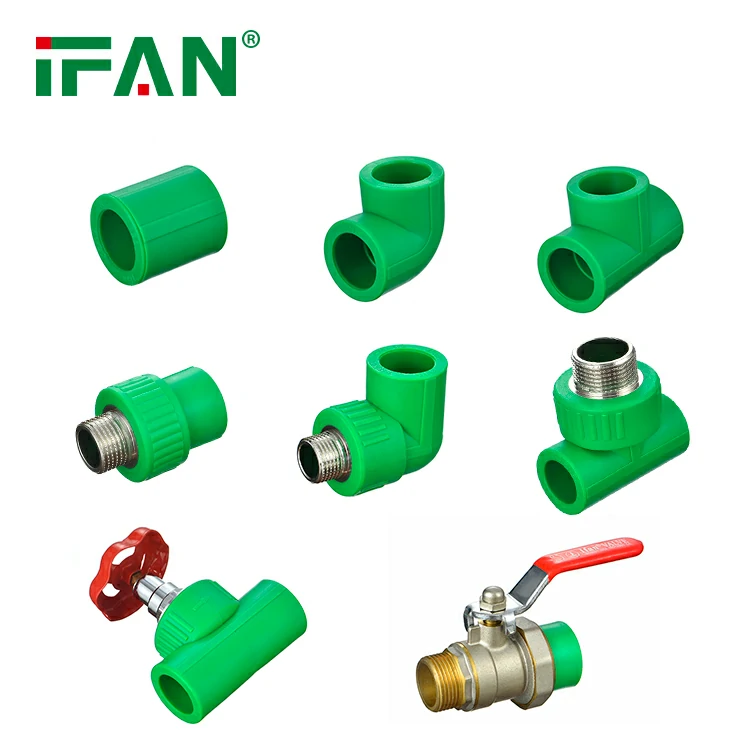
Problem:
PPR fittings are designed to withstand specific pressure levels. Excessive water pressure or pressure surges can damage the fittings or cause them to fail, resulting in leaks or bursts.
Solution:
Managing water pressure is key to maintaining the integrity of your PPR system. Here’s how to handle pressure-related issues:
- Know the pressure limits: PPR systems are typically rated for a maximum pressure of 20 bar for cold water and 10 bar for hot water. Ensure your system operates within these limits.
- Install a pressure regulator: If you have high water pressure, a pressure regulator will help maintain consistent pressure in the system and prevent damage to the fittings.
- Regular inspection: Periodically check your fittings for any signs of stress, such as cracking or deformation, which could be caused by excessive pressure.
By keeping the pressure in check, you can extend the life of your PPR fittings and avoid costly repairs.
6. UV Damage to PPR Fittings
Problem:
PPR fittings are vulnerable to UV damage when exposed to direct sunlight for prolonged periods. UV rays can cause the material to degrade, making it brittle and prone to cracking.
Solution:
If your PPR plumbing system is exposed to sunlight, here are some ways to protect it:
- Install in shaded areas: Whenever possible, install your PPR pipes and fittings in locations that are not exposed to direct sunlight.
- Use UV-resistant coatings: You can apply a UV-resistant coating or wrap around the pipes to protect them from sun exposure.
- Bury pipes underground: For outdoor installations, burying the pipes underground will shield them from UV rays and temperature extremes.
Taking steps to protect PPR fittings from UV damage can significantly prolong their lifespan and ensure the reliability of your plumbing system.
Frequently Asked Questions (FAQs)
1. What is the typical lifespan of PPR fittings?
PPR fittings generally last for over 50 years when properly installed and maintained, making them a durable option for plumbing systems.
2. Can I install PPR fittings myself?
Yes, you can install PPR fittings yourself, as long as you have the necessary tools, such as a pipe cutter, fusion tool, and heating equipment. Make sure to follow the correct installation process to avoid common issues like leaks.
3. Are PPR fittings suitable for hot water systems?
Yes, PPR fittings are ideal for hot water systems, withstanding temperatures up to 95°C. However, ensure your system doesn’t exceed these limits to avoid potential issues.
4. What should I do if I detect a leak in my PPR fittings?
If you notice a leak, check the fusion joint for proper installation. If the bond is weak or incomplete, you may need to refit the joint or replace the fitting altogether.
5. Can PPR fittings be used for outdoor plumbing?
Yes, PPR fittings can be used outdoors, but they should be protected from UV exposure. Use UV-resistant coatings or bury the pipes underground to prevent degradation from sunlight.
By understanding and addressing these common issues, you can ensure your PPR fittings remain in good working condition for years. Proper installation, maintenance, and temperature management are key to achieving a long-lasting, leak-free plumbing system.

